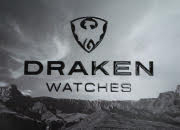
Temat został przeniesiony do archiwum
Ten temat przebywa obecnie w archiwum. Dodawanie nowych odpowiedzi zostało zablokowane.

Mens Vogue o zagarkach Panerai
dodany przez
Klod100, w Gazety i magazyny
Rekomendowane odpowiedzi
-
Ostatnio przeglądający 0 użytkowników
Brak zarejestrowanych użytkowników przeglądających tę stronę.







